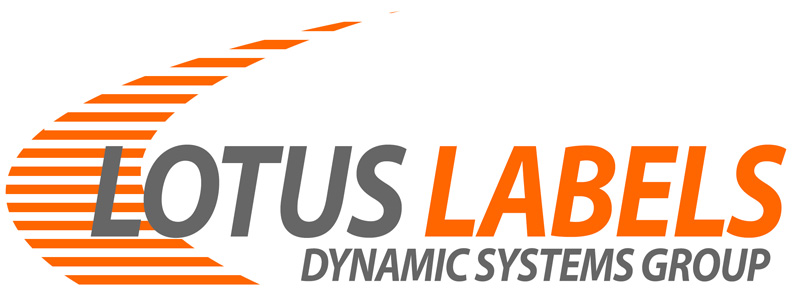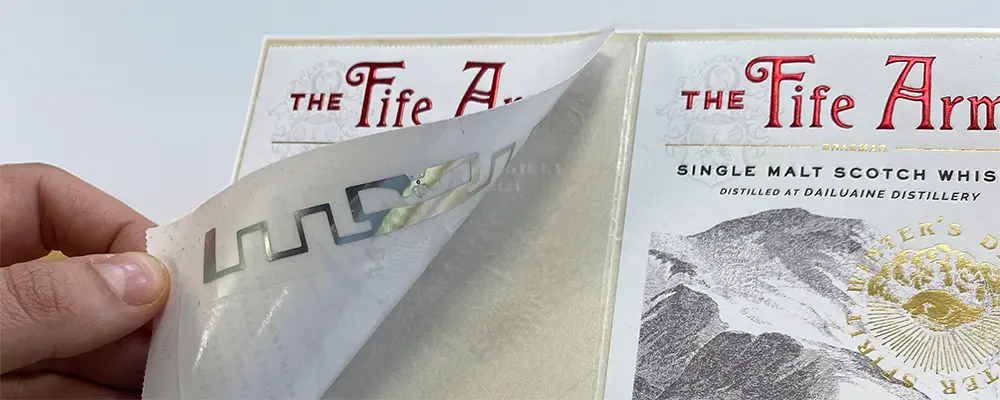Decoding the Tech: Tags, Chips, and Communication
At the heart of smart labelling lies the tag. These tiny wonders come in various forms, each with its own strengths:
- Barcodes: These familiar striped patterns are the workhorses of labelling, offering basic identification. However, they require line-of-sight scanning and limited data storage.
- QR Codes: Taking barcodes a step further, QR codes (Quick Response codes) pack more data into a square grid that can be scanned by smartphones. They’re great for embedding URLs, product information, or even marketing campaigns.
- RFID Tags: These radio frequency identification tags contain a microchip and antenna. When scanned by an RFID reader, they transmit data wirelessly, enabling long-range identification and tracking of items, even within pallets or boxes.
- NFC Tags: Near Field Communication tags operate similarly to RFID tags, but at a much shorter range. They’re perfect for triggering smartphone interactions with a simple tap, ideal for product authentication, detailed information access, or even mobile payments.
The Power of Smart Labelling: Benefits and Applications
Smart labelling offers a multitude of advantages over traditional labels:
- Enhanced Tracking and Visibility: Track inventory movement in real-time, optimize supply chains, and prevent stockouts. Imagine a clothing store knowing exactly which size and colour of shirt is on which rack, eliminating manual checks.
- Improved Security and Authentication: Embed digital fingerprints on products to combat counterfeiting. Pharmaceutical companies can use this to verify the authenticity of their drugs, protecting consumers from harmful fakes.
- Engaging Consumer Interactions: Imagine scanning a wine bottle’s label and accessing its origin story, tasting notes, or pairing recommendations! Smart labelling allows brands to create a richer customer experience.
- Streamlined Data Collection: Gather valuable data on product usage, purchase patterns, and customer behaviour. Imagine a smart label on a fitness tracker that automatically logs workout data to a smartphone app.
These benefits translate into a wide range of real-world applications:
- Retail: Smart labels can automate stocktaking, prevent shrinkage, personalize in-store experiences, and even trigger targeted promotions based on a customer’s shopping history.
- Manufacturing: Track components through production lines, ensure quality control, and optimize logistics. For example, a smart label on a car part can ensure it’s the correct one for the assembly line.
- Pharmaceuticals: Verify drug authenticity, monitor storage conditions, and track expiration dates for improved patient safety.
- Food and Beverage: Track freshness, identify contamination sources, and provide detailed nutritional information to consumers. Imagine getting real-time alerts on your phone if your milk is about to expire.
- Logistics and Supply Chain: Improve shipment tracking, optimize delivery routes, and prevent product tampering. Imagine knowing exactly where your online order is at any given moment.
The Future is Smart: Looking Ahead
The potential of smart labelling doesn’t stop here. Here’s a glimpse into what the future holds:
- Smart Packaging: Imagine packaging that integrates sensors and displays, allowing products to indicate freshness, temperature changes, or even damage.
- Interactive Labels: Labels that respond to touch or voice commands, providing personalized information or triggering augmented reality experiences.
- Biodegradable and Sustainable Labels: Eco-friendly tags made from sustainable materials, minimizing the environmental impact of smart labelling.
As technology advances and costs decrease, smart labelling is poised to become the norm. It’s a future where labels become interactive companions, providing a wealth of information and functionalities, ultimately bridging the physical and digital worlds seamlessly.
The humble label has come a long way from its papery beginnings.
Today, we’re entering the era of smart labelling, where labels aren’t just static pieces of information, but gateways to a world of digital interaction. This technology, powered by clever combinations of RFID (Radio Frequency Identification), NFC (Near Field Communication), and various tag types, is revolutionizing how we track, manage, and engage with products.
Smart Labelling: A Summary
Smart labelling is revolutionizing how we interact with products. By leveraging RFID, NFC, and various tagging technologies, labels are transforming from static information sources into gateways to a digital world.
Key benefits include enhanced tracking, improved security, engaging consumer experiences, and streamlined data collection. These benefits translate into a wide range of applications across retail, manufacturing, pharmaceuticals, food & beverage, and logistics.
The future of smart labelling is bright, with possibilities like smart packaging, interactive labels, and sustainable tags. As technology advances and costs become more affordable, we can expect smart labelling to become the norm, seamlessly bridging the physical and digital worlds.
Here at Lotus Labels we are always looking forward when it comes to adding features to the labels we make.
If you would like to speak with us regarding SMART labelling, including RFID labels and tags or NFC labels for your products contact us
References:
- Smart Label – Wikipedia: https://en.wikipedia.org/wiki/Smart_label

